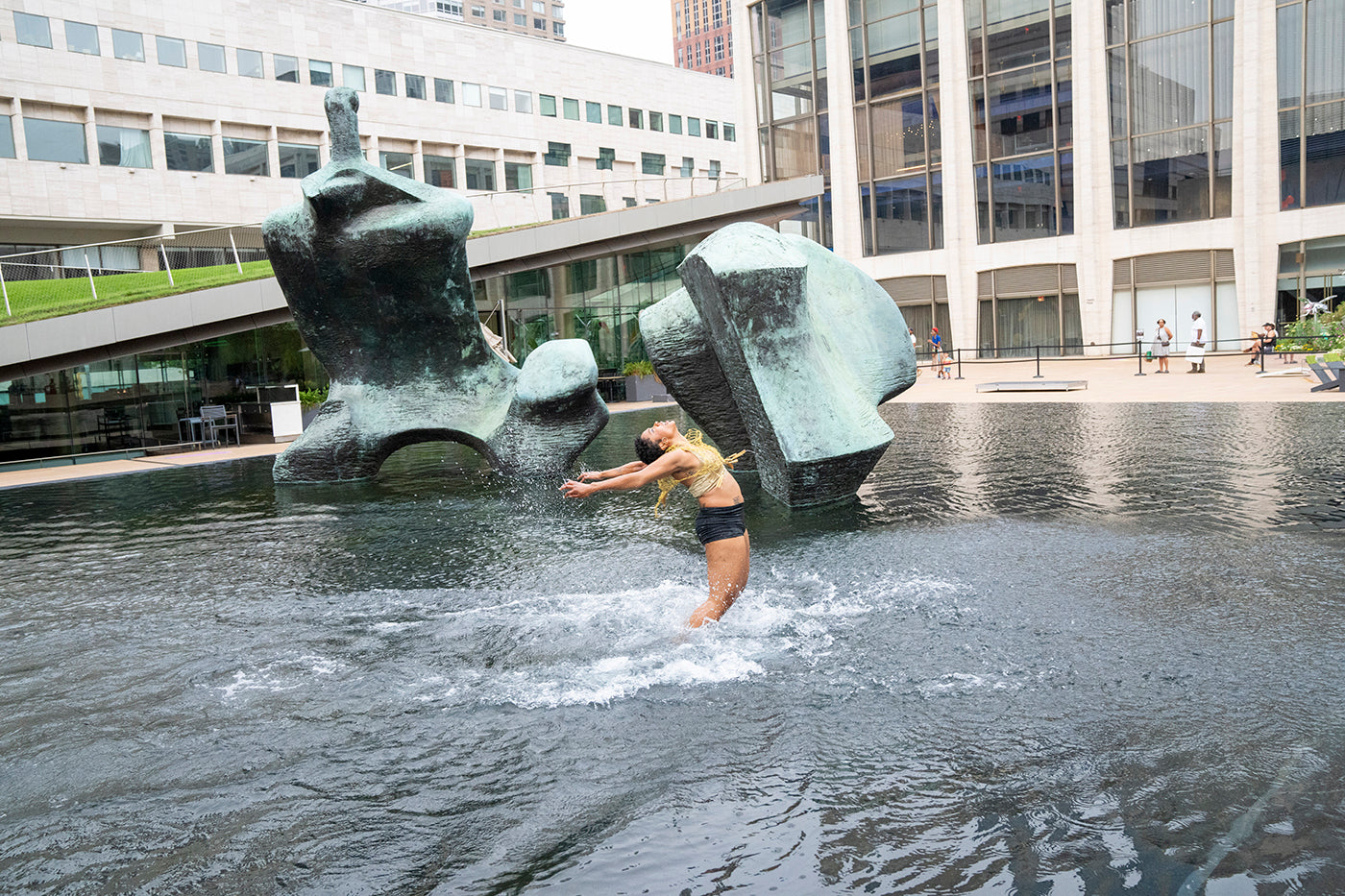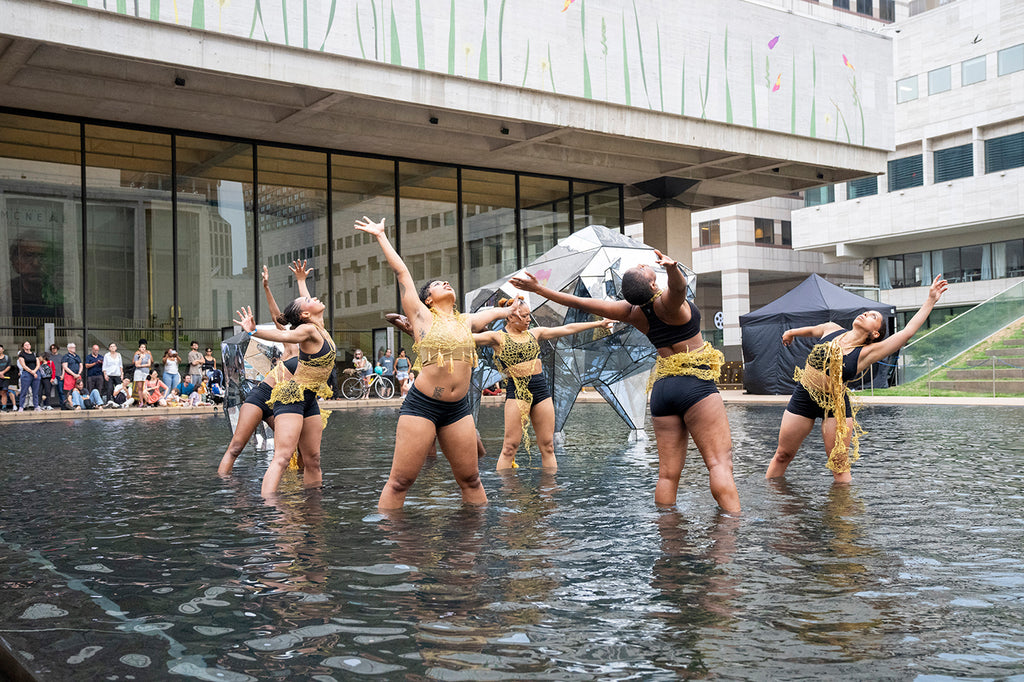Dance Major
On the rear wall of New York Live Arts’ black box theater, two grids of a dozen headlamps each resemble the glaring light towers of a sports arena.
Plus
World-class review of ballet and dance.
On a sultry day like this, it might be easy to imagine we’re somewhere in the south, rather than the urban confines of Hearst Plaza, where a small group has gathered, curious about a free event. We’re not quite sure where to sit. There are café tables, a curving concrete slope that divides the space between a grove of plane trees and a very inviting reflecting pool. For now, we’re directed away from the chairs that face a small stage. As we settle in, some poetry comes through the sound system: “Gather with your folk, that is the medicine; Open your heart to the sky; Drop down, feel your essence, share your essence.” Then Lucianna Padmore takes her place behind a drumset, and Grace Galu Kalambay, picks up a guitar and begins to sing. “We got spells, spells or ways for hot flashes, for the worst cramps, for when you’re not yourself . . .”
Performance
Place
Words




“Uncommonly intelligent, substantial coverage.”
Your weekly source for world-class dance reviews, interviews, articles, and more.
Already a paid subscriber? Login
On the rear wall of New York Live Arts’ black box theater, two grids of a dozen headlamps each resemble the glaring light towers of a sports arena.
PlusTwo productions in one, “World Tales in Dance,” was a charming, crowd-pleasing afternoon of dance theatre.
PlusIn Jo Warren’s “All Mouth,” five dancers perform what could be an action scene from a movie with the playback speed slowed down and sound turned off.
PlusThe Pioneers Go East Collective's Out-Front! Festival highlights “radical queer art + dance,” making it a perfect resident festival for the historic Judson Memorial Church.
Plus
comments